All about heliopsis
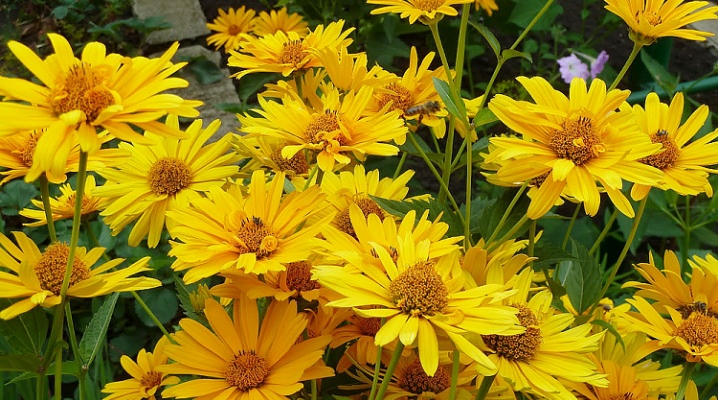
Heliopsis is a herbaceous plant native to North America. It is liked by flower growers for the unpretentiousness of cultivation and care. In the article we will tell you what heliopsis looks like, what happens, what are the basic nuances of planting and leaving.

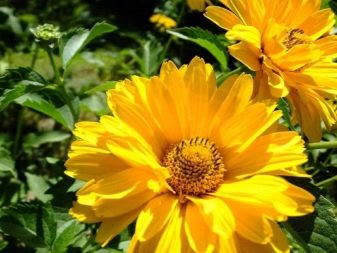
general description
Heliopsis is a representative of the Asteraceae or Compositae family... The plant looks like a chamomile, but is colored yellow. Its name means "like the sun". Visually, the flower resembles the sun, the rays of which are the petals. It has a convex core with brownish stamens in the center. Depending on the variety, the shape of the flower petals can be chamomile pointed or oval, jagged. The height of the plant can vary between 0.5-1.6 m. The bushes themselves are compact and tall. The shape of the leaves varies. In addition to slightly pubescent, it can be elongated-cordate. The arrangement of the leaves is alternate or opposite.
Inflorescences are collected in dense panicles. The diameter of each basket is 9 cm. The shade can be not only yellowish, but also golden, brownish. Bushes of yellow daisies are usually wide, reaching 1 m in diameter. Shoots are predominantly straight and branched. Based on the variety, they can become lignified over time. Yellow chamomile has a complex inflorescence consisting of pseudo-ligate and tubular flowers. The first ones are located at the edges, the second ones - in the central part. Heliopsis is annual and perennial. The plant has double, semi-double, simple baskets of inflorescences. The color of the reed flowers is orange. The fruits of the flower are naked flat achenes.

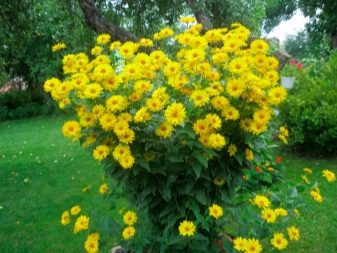
Popular species and varieties
The plant has several varieties.
- Sunflower heliopsis is considered a classic... Most ornamental varieties and hybrids are cultivated by gardeners thanks to it. In our country, the flower is called a solar or golden ball, wild chamomile, bull's eye. Its fruits ripen in temperate climates. Individual specimens are considered indoor. This variety is perennial. Its stems reach a height of 1 m. The shape of the leaves is pointed towards the top, the shoots are straight with bare stems. The flower is more similar to ordinary chamomile than other varieties. It blooms profusely, which lasts almost all summer. This variety is grown as a horticultural crop.
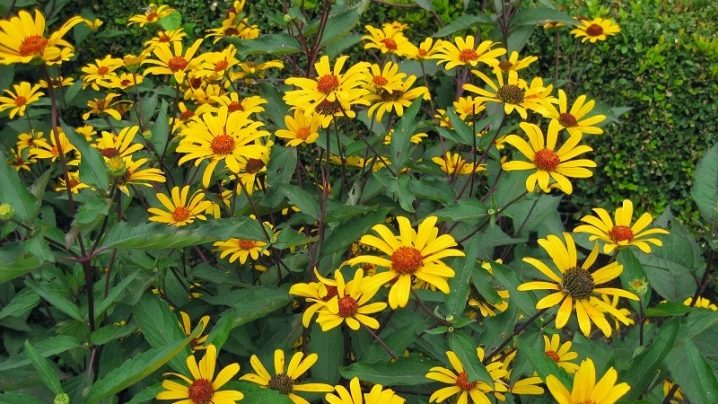
- Rough heliopsis is considered a type of traditional flower. It became famous in the 19th century, it grows up to 1.5 m in height. It is distinguished by a rough upper part of green stems. In addition to the stems, tough villi cover the leaf blades. The arrangement of leaves on short petioles is opposite. The shade of the flowers is golden yellow, amber. The size of the inflorescences is about 7 cm. A distinctive feature of the variety is its resistance to low temperatures. In addition, the bush stands out for its many inflorescences. Thanks to him, other varieties have been created that have received awards from the horticultural society.
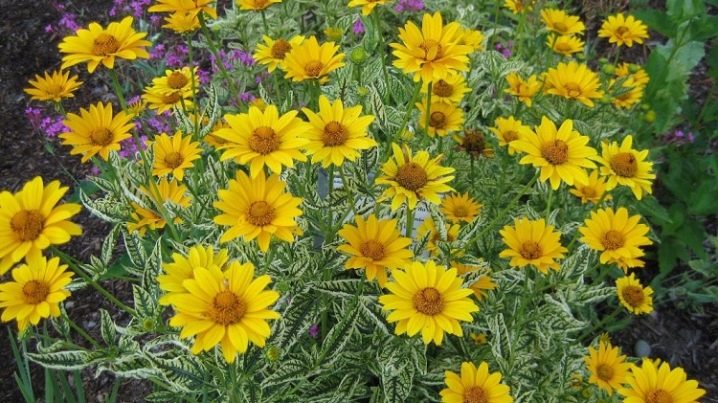
- One of the popular varieties is Lorraine Sunshine. It has a pleasant aroma, a simple type of inflorescence. The height does not exceed 0.75-0.8 m. The leaves of the plant have an unusual color: they are white with green veins.

- The Summer Knights variety, bred by American breeders, has a bush height of up to 1.2 m. Unlike other varieties, it has a dark brown stem, bronze foliage, simple flowers.Unlike the previous species, the shade of the flowers is not yellow, but orange, with a reddish tint of the core. It has a pleasant smell and attracts butterflies and bees.
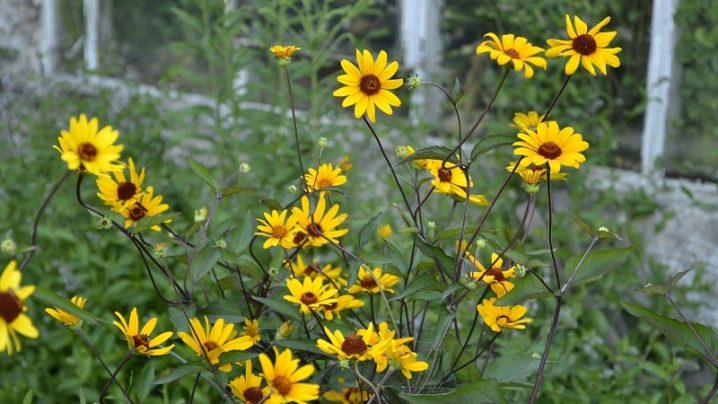
- Summer Sun has the largest flower sizes. They are as close as possible to sunflower in comparison with other varieties.
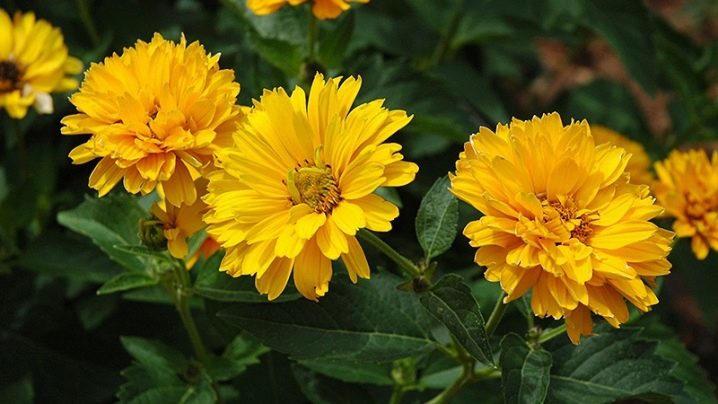
- View "Asahi» has a barely noticeable middle of the flowers. Their shape is more like scaled-down versions of dahlias. The variety is distinguished by lush and abundant double flowering, but small growth, therefore, does not require a garter.
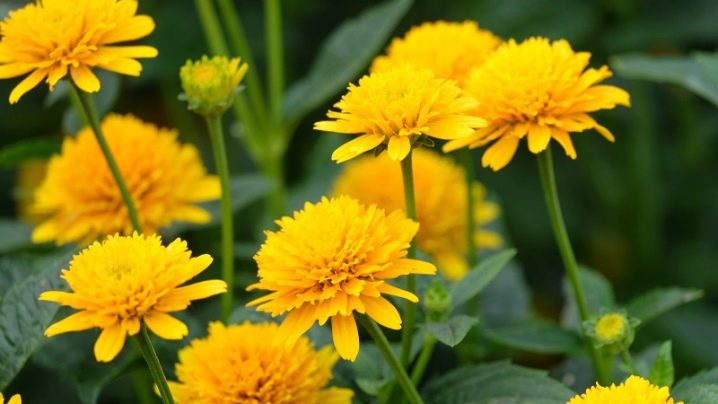
- Have «Summer pink» leaves stand out more than flowers. They are painted in purple, sometimes purple with emerald veins. Due to this, the bright yellow flowers with curled edges contrast sharply against their background.
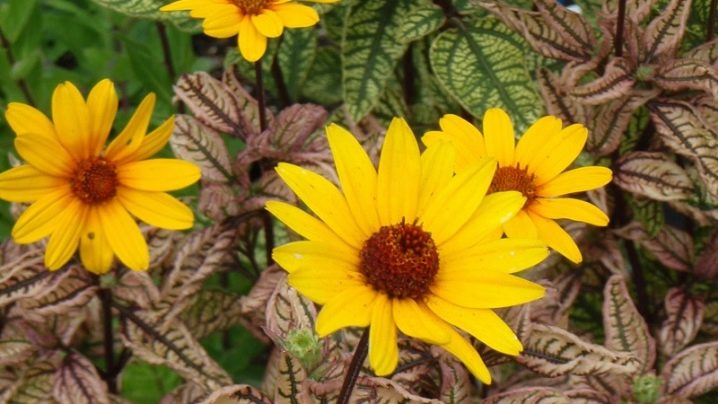
- «Summer green» - decorative view, reaching a height of no more than 65 cm. In this case, the diameter of the flower is about 8 cm. The foliage of the flower is painted in a yellow-green hue with contrasting dark green veins. The flowers have black stalks.
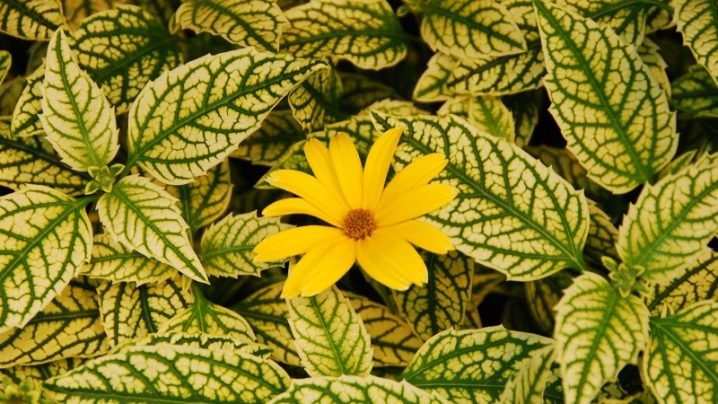
- «Sparkling contrast» - flowering perennial with a maximum height of bushes up to 160 cm. Blooms from June to September, used for single or group planting. It has a characteristic bright orange color at the core.
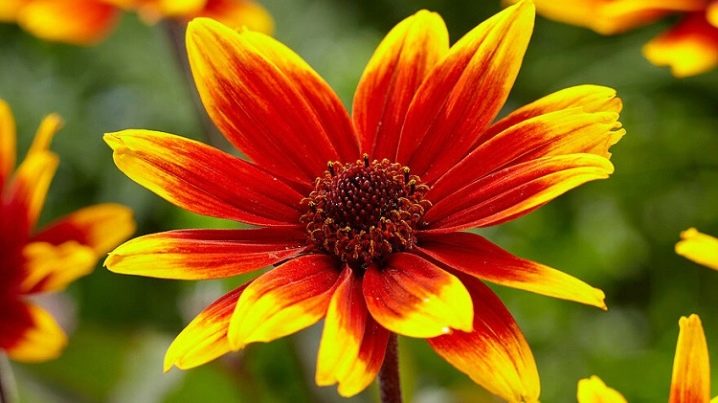
- «Double Sunstrike» belongs to low varieties with double flowers of a soft yellow color with an amber-brown center. It is winter-hardy and can withstand temperatures from -29 to -34 degrees. Blooms from June to August.
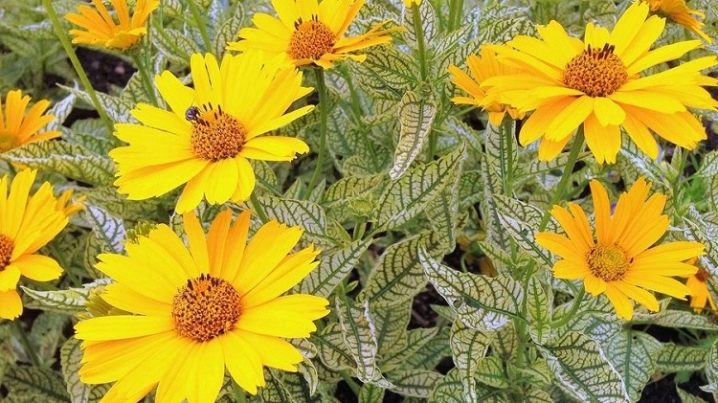
- «Berning harts» - unpretentious long-flowering perennial with semi-double inflorescences with an orange middle. It is considered one of the best winter-hardy, disease-resistant varieties.
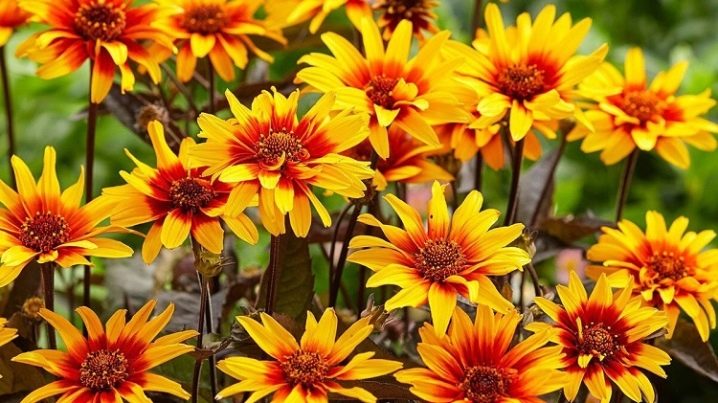
- Heliopsis variegated - variegated ornamental culture grown for landscape decoration. The plant is erect, with numerous shoots. Differs in the pointed shape of the leaves, their hairiness and silvery shade. This color is due to the presence of mutant cells that are unable to produce chlorophyll.
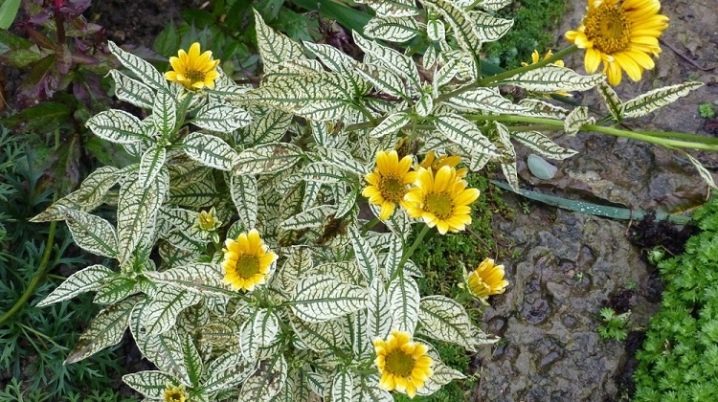
- "Venus" is a low variety with golden yellow flowers. Differs in abundant and long flowering. Visually resembles a chamomile, has rough, jagged leaf plates. Purchased for landing in a well-drained site. Used for landscape decoration and cutting. It grows in height no more than 60-80 cm. It has powerful stems and flowers up to 12 cm in size.
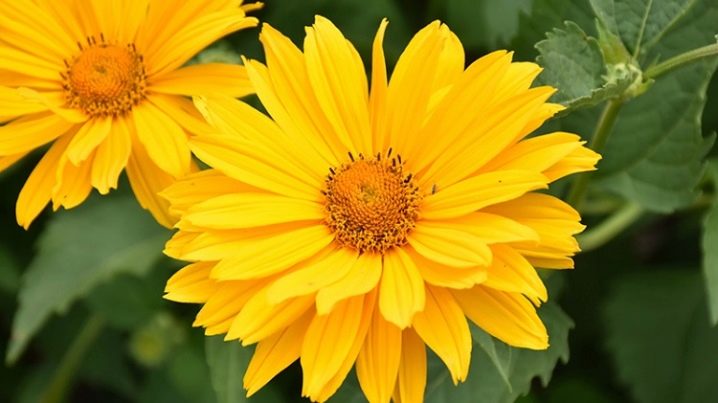
- "Golden Balls" or "Golden Plum" is a tall variety of yellow chamomile. Differs in luxurious fluffy double flowers of a golden hue. They have a round volumetric shape with a spherical center.
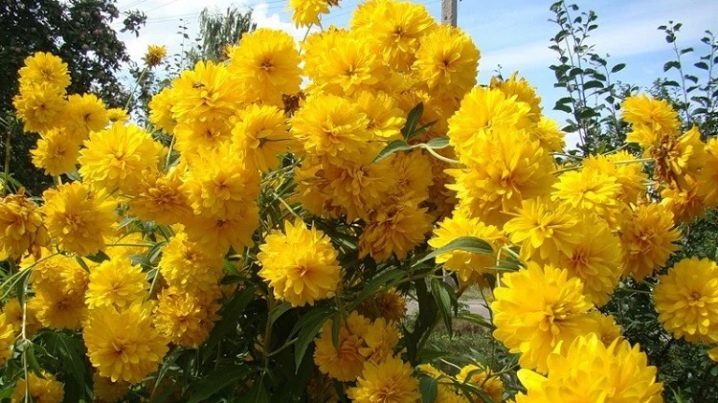
- Buphthalmic - an annual cultivar up to 70 cm high with green lanceolate leaves. It has simple yellow flowers.
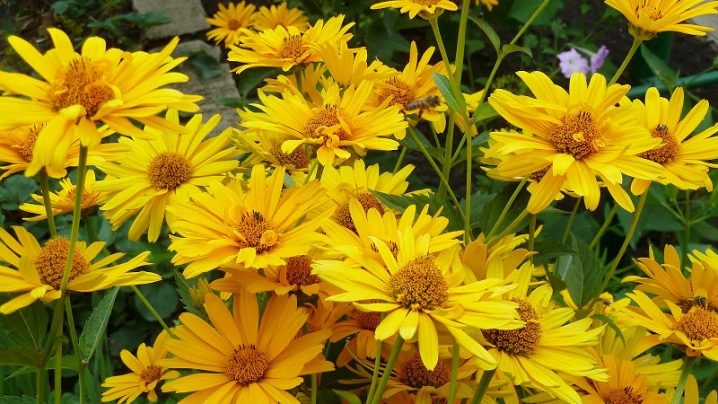
- Fire Twister is an unusual variety with dark stems and orange-reddish inflorescences. Suitable for container planting, blooms from early summer to October.
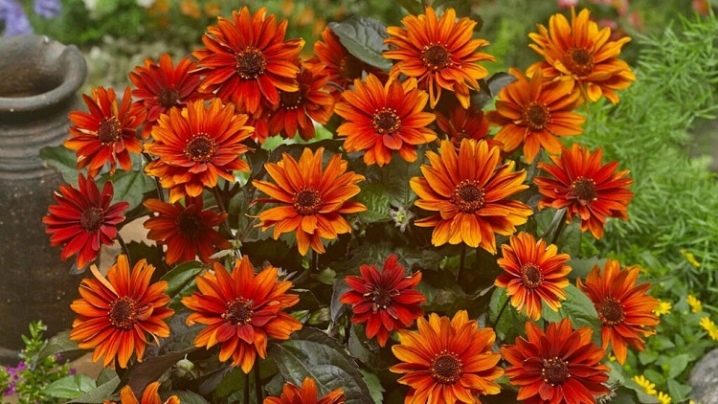
- Hohlspiegel is a variety reaching a height of 1.2-1.5 m. Differs in ovoid leaf shape.
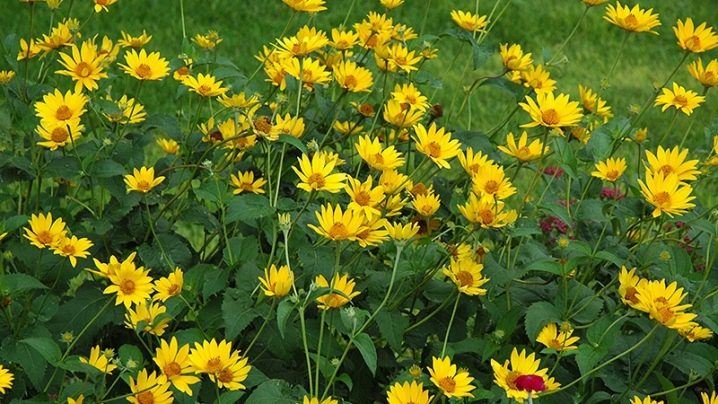
Landing
For planting, they buy a ready-made substrate consisting of a mixture of peat and turf. And you can also prepare a soil consisting of equal parts of turf, sand and peat. The earth is spilled with a saturated solution of potassium permanganate and left for 2 weeks. After that, the soil is ready for planting seeds. It is placed in containers, moistened, seeds are planted on top.
They are not deepened, but slightly pressed into the ground with a finger. Then they are covered with a film and removed to a warm place for germination. To create better conditions, you need to periodically remove the film and air the seedlings. This will eliminate the likelihood of rotting seedlings and the appearance of condensation. As soon as the first shoots appear, the film is removed, the seedlings are placed in a well-lit place. Then it is prepared for planting in open ground.

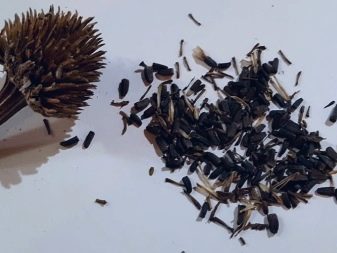
Hardening consists in taking the containers outside on a daily basis. In this case, the initial exposure time is constantly increased. This minimizes the stress of the plant when transplanting to a permanent location.... It is possible to plant heliopsis in the drained land when the temperature outside warms up to +10 degrees. If possible, the place should be sheltered from drafts.
When planting in open ground, a layer of crushed stone 20 cm thick is laid. On top it is covered with sand, then it is leveled with a layer of soil with compost. Seeds for seedlings are sown at the end of February.
Seedlings are planted in open ground in mid-May - early June. And also the seeds are planted in the ground before winter.


Reproduction
Heliopsis reproduces by seeds and division. In the first case, the seeds are grown as ordinary seedlings. They are planted in prepared containers, germinating in a greenhouse or indoors. Seedlings dive in peat pots when the first pair of true leaves appears on each seedling. The culture emerges in a few days from the moment of planting. If the culture is propagated by division, the roots of the plants are dug up in the spring. They are cut in such a way that at least 2 buds remain on each part. Bushes at the age of 4-5 years are subject to division.
The dry parts of the roots are cut off. Good ones are planted in the ground with an interval of 40 cm between planting pits. Depending on the size of a particular variety, the distance between the holes is 30-50 cm. If tall plant varieties are propagated, supports are immediately installed. The surface is compacted and watered.
It is necessary to transplant heliopsis to another place no more than 1 time in 5-7 years.
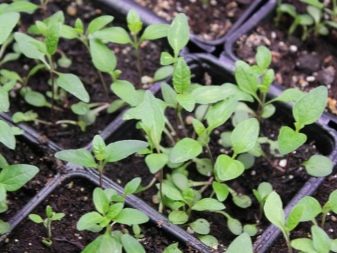
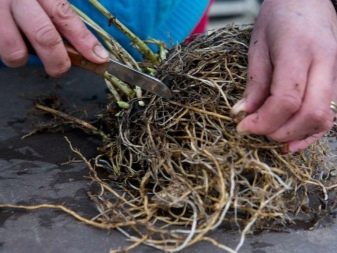
Care
Heliopsis is not a pampered flower. It perfectly tolerates not only heat, but also cold. Able to survive drought, if there is no rain or the ability to water the flower. It signals poor growing conditions with late or shallow flowering. If there is not enough light for the plant, the branches of the culture will become weak, and the inflorescences will become small. Bushes should not be planted on loamy and limestone-rich soil. Ordinary garden land is the best landing site.
If the soil tends to accumulate moisture, drainage is taken care of before planting. The growing area should be well lit. The plant loves bright sunlight. It is necessary to loosen the soil in a timely manner, get rid of weeds, and form bushes. It is important to keep the plant tidy. All wilted and dried branches are removed. Supports are used wooden, metal, mesh, frame. It is not necessary to cover the plant for the winter.
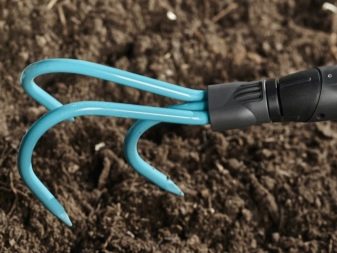
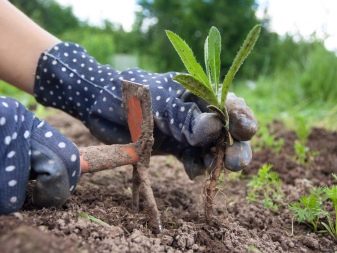
Watering
The first year of growth in the garden, "golden balls" feed mainly on sunlight and water. Perennials will need fertilization in the second year of cultivation. If the summer is rainy in the region, additional watering is not needed. In dry times, heliopsis should be watered at least 2 times a week. You need to moisten the bushes in the morning so that they do not burn from the sun. Use warm water for irrigation. It can be heated in the sun to avoid stressing the plant. In addition to early morning, you can water the bushes in the evening.
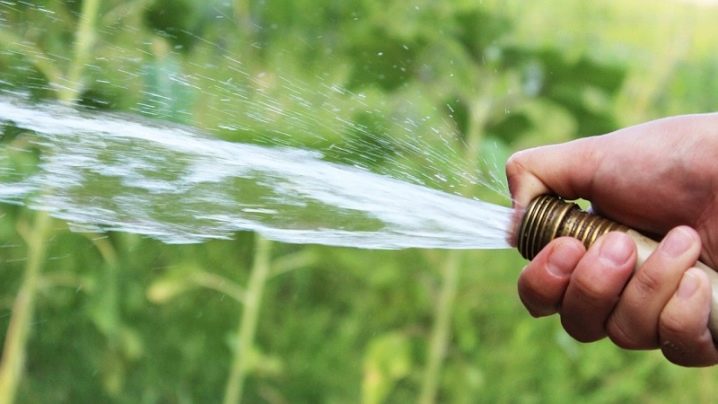
Top dressing
To create favorable conditions, it is enough to feed the bushes no more than 1 time per month. You can alternate organic fertilizer with mineral fertilizing. For this, you can purchase a special complex for flowering crops. In spring, a nitrogen composition can be used as a top dressing for bushes planted in open ground or in a flower bed.
In mid-July - early August, it is better to use a potassium-phosphorus complex. If the soil is rich in humus, top dressing may not be required. When applying fertilizer, one should not forget about loosening and removing weeds.
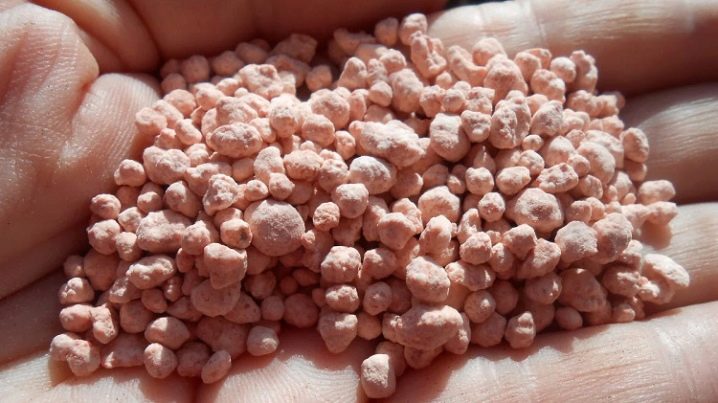
Pruning
You need to prune bushes all the vegetative time.... This will give the bushes the correct spherical shape and increase the total number of flowers. You also need to remove wilted flowers. Thus, the growing season will last and conditions will be created for the formation of new inflorescences. The frequency of the procedure is once a week. To accelerate the growth of green mass, it is necessary to regularly pinch the stems and shoots.
Formation is also necessary when the bushes are located close.

Diseases and pests
Heliopsis is not interesting for parasitic insects. The only exception is the black aphid. If she just settled in the bushes, urgent action is needed. In the fight against it, they usually use infusions of nightshade, tomato tops, wormwood, celandine with liquid soap. However, if the lesion is extensive, an insecticide will have to be used. If the bushes are heavily infested, it is best to dig them up completely and burn them. In addition to pests and inadequate care, fungal infections can be the cause of poor health.
Despite the resistance of yellow chamomile to various diseases, it can suffer due to powdery mildew and rust... At the same time, plaque and spots are visible on the lower part of the plants, sometimes the leaves of the plant curl. A whitish or grayish coating is a characteristic sign of powdery mildew. It appears on the leaves, is a fungal disease caused by microscopic fungi from the order of powdery mildews. In addition to leaves, it can appear on shoots. The fight against it is long and consists in repeatedly spraying the bushes to achieve health. In addition, preventive treatment is carried out.

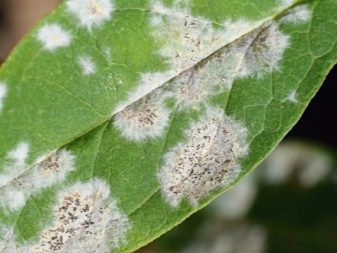
The reasons are varied. This is due to drought, excess moisture, calcium deficiency, dense planting, nitrogenous soil. Effective chemicals - "Acrobat MC", "Amistar Extra", copper sulfate. In addition, you can treat the bushes with "Topaz", "Fundazol". As folk remedies, you can use soda ash with soap, serum, potassium permanganate. Rust that infects the plant is spread by fungal spores, infecting not only young, but also old shoots. The first signs usually appear in mid-summer when the plant enters the growing season.
The most likely causes are heavy soil, lack of preventive treatments, deficiency or excess of nutrients... In addition, it may be a lack of potassium. To get rid of rust, you need to use chemicals and biologicals. Fitosporin, HOM, Strobi, Topaz are suitable. The funds are diluted according to the instructions on the package. To prevent the disease, you need to follow a number of simple rules. It is important to land in a place protected from the wind, but with ventilation. You can not plant bushes next to plants that are exposed to rust. The lesions need to be localized in a timely manner.
To avoid relapse, preventative measures should not be ignored. Bordeaux liquid will help to cope with the problem.
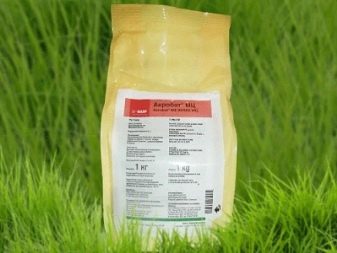
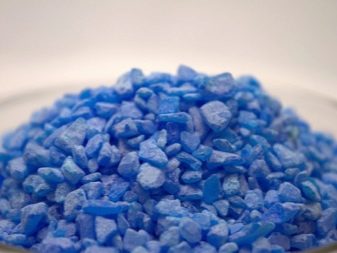
Application in landscape design
Heliopsis is actively used to decorate the local landscape. Despite its unpretentious appearance, it looks great when decorating a plot in the style of the French hinterland, country, Provence. It goes well with phlox, delphinium, calendula. Looks advantageous against the backdrop of greenery with a bright sunspot. At the same time, high grades are traditionally used to decorate fences.
Flowerpots are decorated with low-growing crops, as well as the first rows of flower beds and flower beds. Varieties with unusual leaf color will be a decoration until the growing season. Heliopsis fits well into various group flower gardens. It looks especially juicy against the background of undersized needles and green bushes. The ideal neighborhood is spicy herbs and plants with flowers of purple and blue tones.
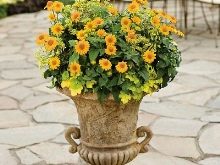
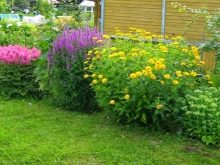
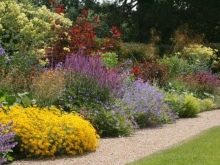
With its help, they make out a hedge... Due to the well-groomed and formed bushes in the landscape of summer cottages, they resort to space zoning. It looks great against the backdrop of cereal plants, wicker baskets, ornamental wood carts. Wherever it is planted, a sunny mood is created. It pleases the eye from early spring to autumn. Bushes are used for the background of mixborders. They look great with large curtains.
Among other plants, a successful combination will be the neighborhood with cornflowers, rudbeckia, echinacea, bells.Plants look beautiful together with asters and daisies. A good solution when decorating a mixborder would be to combine yellow daisies with barberry. You can plant flowers in open lawns and areas. They look good along buildings. They can mask façade defects. They can cover unsightly walls. Tall sunflowers are planted behind low flowers. Thanks to this, they do not create unnecessary shadows and do not interfere with their growth. In this case, the flowering time of other plants is taken into account.
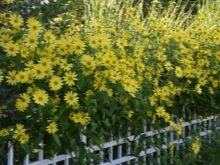
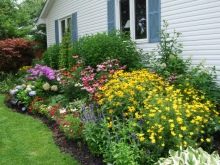
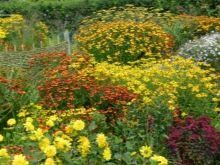







































































































The comment was sent successfully.